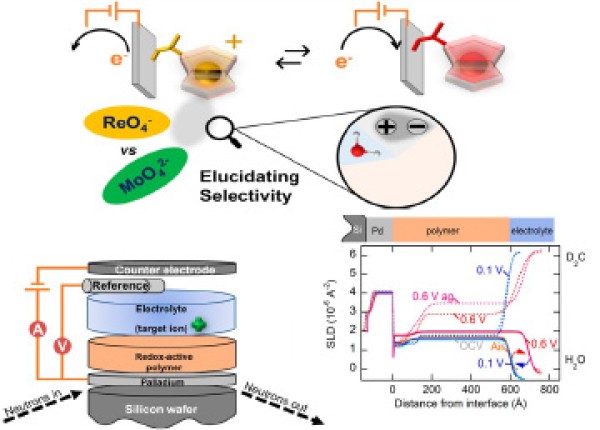Insight into Separation Mechanisms Critical to Transition Metal Recovery

Scientific Achievement
Revealed underlying mechanisms responsible for selective ion separations in redox active polymers.
Significance and Impact
In situ neutron reflectometry (NR) allowed determination of solvent fraction profiles on nanometer length scale essential for understanding separation mechanisms providing guidance in the design of tunable metallopolymer systems for critical metals recovery, nutrient recycling and remediation.
Research Details
Materials synthesis, film fabrication and characterizations carried out at University of Illinois Urbana-Champaign. In situ NR performed at the SNS using the Liquids Reflectometer and a BioLogic VSP potentiometer. Ab Initio molecular dynamics simulations performed at Pacific Northwest National Laboratory (PNNL).
“Unraveling the Role of Solvation and Ion Valency on Redox-Mediated Electrosorption through In Situ Neutron Reflectometry and Ab Initio Molecular Dynamics”, Journal of the American Chemical Society Au 4 (3), 919-929 (2024). Riccardo Candeago, Hanyu Wang, Manh-Thuong Nguyen, Mathieu Doucet, Vassiliki-Alexandra Glezakou, James F. Browning, and Xiao Su
https://pubs.acs.org/doi/10.1021/jacsau.3c00705





